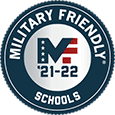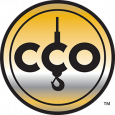America’s roads, bridges, and buildings will always need to be maintained and repaired, which means the construction industry is rife with opportunities.
Thinking about entering the construction industry? With the right training and guidance, you can have a long, successful career as a heavy equipment operator. Of course, working with heavy machines and equipment comes with certain hazards. That’s why the Occupational Safety Health Administration (OSHA) has set safety guidelines for companies and crews to follow to maintain a safe workspace.
Learn more about OSHA 2021 guidelines and how HEC can help you start a career working with heavy equipment.
Table of Contents
Importance of Safety in the Heavy Equipment Industry
According to OSHA, close to 6.5 million construction workers operate in nearly 252,000 construction sites across America. With so many workers on-site, accidents are nearly impossible to avoid. However, the more informed you are about workplace hazards, the easier it’ll be to prevent them, and the safer everyone will be.
OSHA Guidelines 2021
OSHA 2021 guidelines keep workers safe from falls, hazardous chemicals, and other common injuries on construction sites. Employers must comply with these guidelines in order to operate lawfully. Read more about OSHA’s guidelines to increase your safety and the safety of everyone on the worksite.
- Falls
According to OSHA data, falls are the most common cause of fatalities in the construction industry. These can occur from unstable surfaces, improper setup, or lack of fall protection. Although not every fall results in a fatality, even a minor fall can gravely injure you or someone around you. To stay safe on the job, OSHA recommends that you utilize aerial lifts or elevated platforms, use safety nets, body harnesses, and cover any holes or gaps in work surfaces. - Trench Collapse
Trenches are a major hazard on the worksite. Unprotected trenches, lack of safe ways to exit the trench, and lack of protective systems can cause major injury and death. To avoid this, OSHA recommends that you let professional engineers create a protective system that provides adequate protection. If you plan on creating a trench of five feet or deeper, a protective system must be in place. You should also be sure that a trench has been thoroughly inspected for proper spoil placement, means of exit, and other hazards.
- Ladders & Stairways
Neglecting to ensure that ladders are on a non-slip surface or are long enough to reach the work area can cause accidents or worse. Similarly, stairways that are slick or congested with debris can be another source of injury on the job. To curb accidents, OSHA recommends that you inspect the ladder before use, never load it past capacity, and be sure the ladder is on a stable surface. For stairways, you should ensure that any hazards such as debris or slippery substances are cleared from the stairway and that handrails are utilized on stairways that rise more than 30 inches. - Cranes
Cranes are a valuable asset to any construction site, but improper use, lack of inspection, and neglecting your surroundings can all result in accidents. To avoid crane-related accidents, you should only operate cranes if you have proper training and certification from an accredited program like ours. During your crane safety training, you’ll learn about proper operation, what hazards you’ll face on a job site, and more.
- Forklifts
According to OSHA statistics, around 100 employees are fatally injured, and around 95,000 employees are injured annually while operating forklifts. That’s why it’s vital that only those with proper training and certifications are permitted to operate forklift trucks. If you want to operate a forklift safely, always conduct a pre-inspection before operation, never make your own modifications or attachments, and adhere to load capacities. - Proper Personal Protective Equipment (PPE)
PPE can be anything from a hardhat to proper foot protection. Each piece of personal protective equipment is designed for protecting workers from injuries or even death. For example, if you are working and a piece of debris comes falling down, a hardhat can protect you from a serious head injury. Similarly, face shields and safety glasses can protect you from projectiles flying into your eyes. Proper use of PPE can help you maintain a safe working environment.
OSHA: COVID-19 Guidance for the Workplace
COVID UPDATE
While most of the above hazards are physical ones, new hazards also put workers at risk, such as the novel coronavirus known as COVID-19. In conjunction with CDC guidelines, OSHA has put forth recommendations for crews and companies to follow to ensure the safety and health of all those involved.
For workplaces where ALL workers are fully vaccinated (meaning it has been two weeks since they have received their second dose or only dose in some cases), workers are not required to wear face masks. However, if some are still not vaccinated, all workers should continue wearing face masks and other PPE regardless of vaccine status. These guidelines will likely continue to change as the virus’s spread is monitored by health officials.
Get Proper Safety Training and Certifications at HEC
Despite the hazards, working in the heavy equipment or construction industry can be quite rewarding. Not only is it an industry that will always be in demand, but the need for new operators and workers will grow with the demand.
Of course, not just anyone can operate a crane, bulldozer, or other pieces of heavy equipment. You’ll need property safety training and certifications first.
And at HEC, not only can you be trained and certified—you can complete our programs in as little as three weeks. But that’s not all; we also have career services that’ll help you with every part of the job-hunting process. We have campuses nationwide. Find one near you and get started on your path to a successful career.




